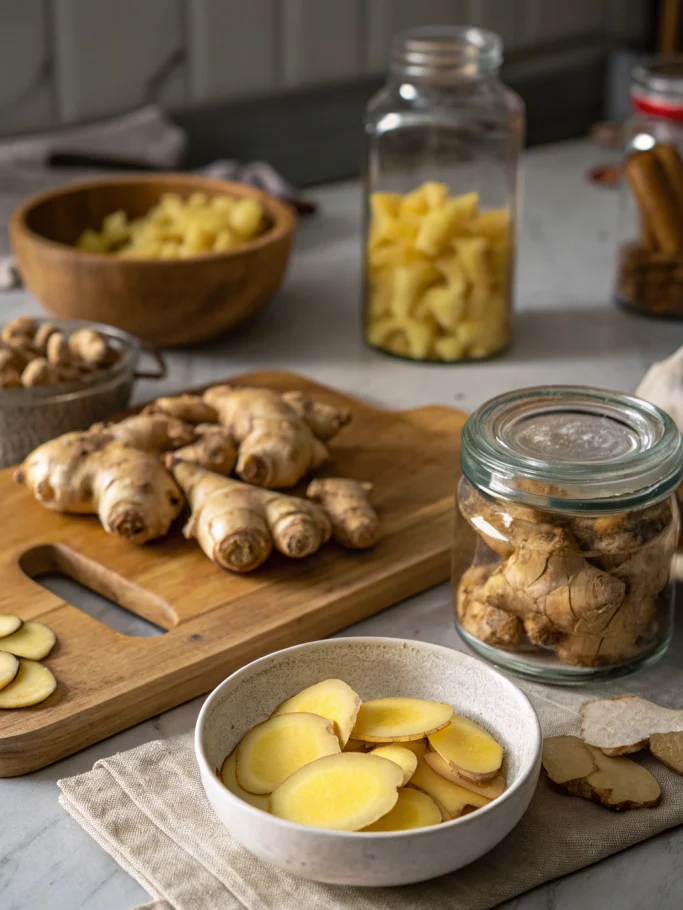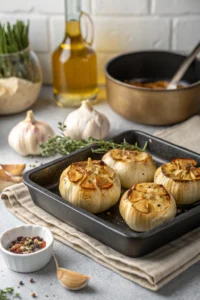Y’all, let me tell you about my ginger-hoarding adventures! Last month, I found this amazing sale on fresh ginger at my local market and totally went overboard. But who could blame me? The real challenge was figuring out how to store ginger properly before it turned into a science experiment in my produce drawer. After some trial and error (and a few moldy mishaps), I’ve finally cracked the code on keeping ginger fresh. Whether you’re a stir-fry enthusiast or just love your morning ginger tea, these storage tricks will help you keep that spicy root in tip-top shape. Trust me, once you know how to store ginger correctly, you’ll never have to toss out dried-up pieces again!
Best Methods to Store Fresh Ginger Root
Room Temperature Storage Tips for Short Term
Listen up, friends – if you’re planning to use your ginger within a week, keeping it on your counter can work just fine! I learned this the hard way after stuffing everything in my already-packed fridge. To store ginger at room temp, pick a cool, dry spot away from direct sunlight – that sunny windowsill is a no-go!
Your kitchen counter or pantry works great, as long as it’s not near the stove or dishwasher where heat and moisture hang out. Keep the skin on and only cut what you need. I like to place mine in a paper bag with a few air holes – it’s like a cozy little ginger apartment! Just check on it every couple days and use any pieces that start looking iffy.
Refrigerator Storage Techniques
Here’s my favorite way to store ginger for the medium haul – pop it in the fridge! But hold up – don’t just toss it in there all willy-nilly. First, gently clean off any dirt (but don’t wash it!), then wrap your ginger root loosely in paper towels. Next, slip it into a resealable plastic bag, but – and this is key – leave it slightly open for airflow. I store ginger in the crisper drawer, where it stays happy for up to three weeks. Pro tip: if you spot any mold, just trim it off and the rest is still good to go! Check the root every week or so, and remember to pat it dry if you notice any condensation building up.
Freezing Ginger for Long-Term Freshness
Okay, freezing ginger is my secret weapon for always having it ready to go! First, clean your ginger root and peel it (I use the back of a spoon – works like magic!). Now, here’s where you’ve got options to store ginger long-term. You can either grate the whole thing and freeze it in one-tablespoon portions using an ice cube tray, or slice it super thin and freeze it flat on a baking sheet. After it’s frozen solid, transfer to a freezer bag and date it. My frozen ginger stays tasty for up to six months! The best part? No thawing needed – just grab what you need and throw it straight into your cooking.
Preparing Ginger Before Storage
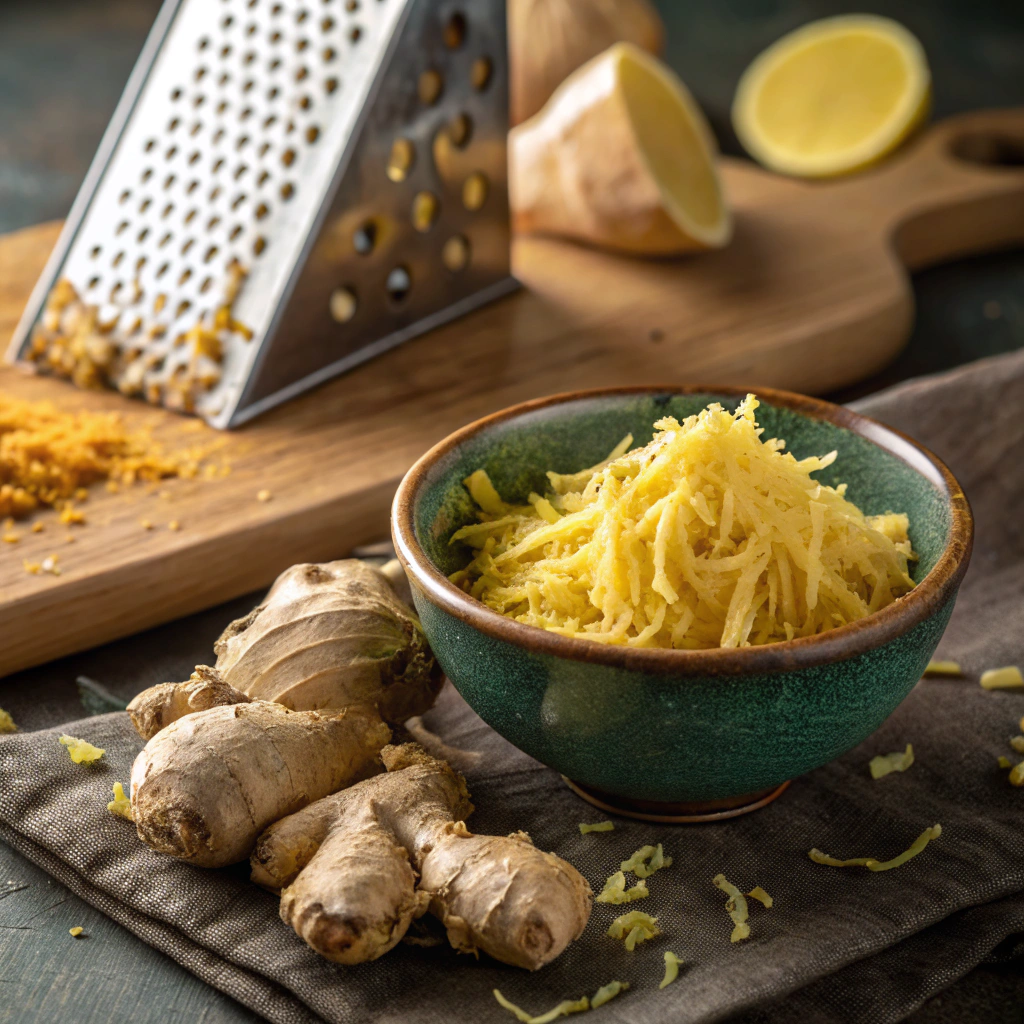
Cleaning and Drying Your Ginger Root
Before you store ginger, it’s essential to prep it properly to maintain its freshness. Start by gently scrubbing the root under cool running water to remove any dirt or debris. I learned the hard way that skipping this step can lead to mold growth! Pat the ginger dry thoroughly with paper towels or a clean kitchen cloth – moisture is the enemy when it comes to long-term storage.
For the best results, let your ginger air dry completely on a wire rack for about an hour. This extra step helps prevent any hidden moisture from causing issues later. I like to store ginger in a cool, dark spot in my pantry, making sure there’s good air circulation. A paper bag works great for this, as it allows the root to breathe while protecting it from light.
Peeling vs Unpeeled Storage Options
When deciding how to store ginger, the choice between peeled and unpeeled depends on your cooking needs. Unpeeled ginger generally lasts longer since the skin acts as a natural protective barrier. I’ve found that whole ginger roots can stay fresh in the refrigerator’s crisper drawer for up to three weeks when stored properly in a paper bag or wrapped in paper towels.
If you prefer to store ginger peeled, it’s best to plan for shorter storage times. After peeling, wrap the ginger tightly in plastic wrap or place it in an airtight container. The peeled root will keep well in the fridge for about a week. For longer storage, consider freezing your peeled ginger – it’ll maintain its flavor for several months just like when you store potatoes properly.
Cutting and Portioning for Easy Use
Learning how to store ginger in convenient portions has been a game-changer for my cooking routine. I like to cut the root into manageable chunks – about 1-inch pieces work well for most recipes. Some pieces can go into the fridge for immediate use, while others can be prepped for freezing or making into paste.
When freezing portioned ginger, lay the pieces on a parchment-lined baking sheet first. Once frozen solid, transfer them to a freezer bag. This prevents them from sticking together, so you can easily grab just what you need. For grated ginger, I portion it into ice cube trays – each cube equals about one tablespoon, perfect for quick stir-fries or marinades. When preparing fresh herbs and spices, proper fresh herb storage techniques can help maximize their lifespan, just like with ginger.
Creative Ways to Preserve Ginger
Making Ginger Paste for Quick Cooking
Creating ginger paste is my favorite way to store ginger for everyday cooking. Simply peel and roughly chop fresh ginger, then blend it with a splash of neutral oil until smooth. The oil helps preserve the paste and keeps it from oxidizing too quickly. I typically store ginger paste in small jars in the refrigerator, where it stays fresh for up to two weeks.
For longer storage, divide the paste into ice cube trays and freeze. Once frozen, pop out the cubes and transfer them to freezer bags. This method lets you grab exactly what you need for recipes without thawing a larger portion. Each cube equals about one tablespoon of fresh ginger, making recipe measurements a breeze.
Dehydrating Ginger at Home
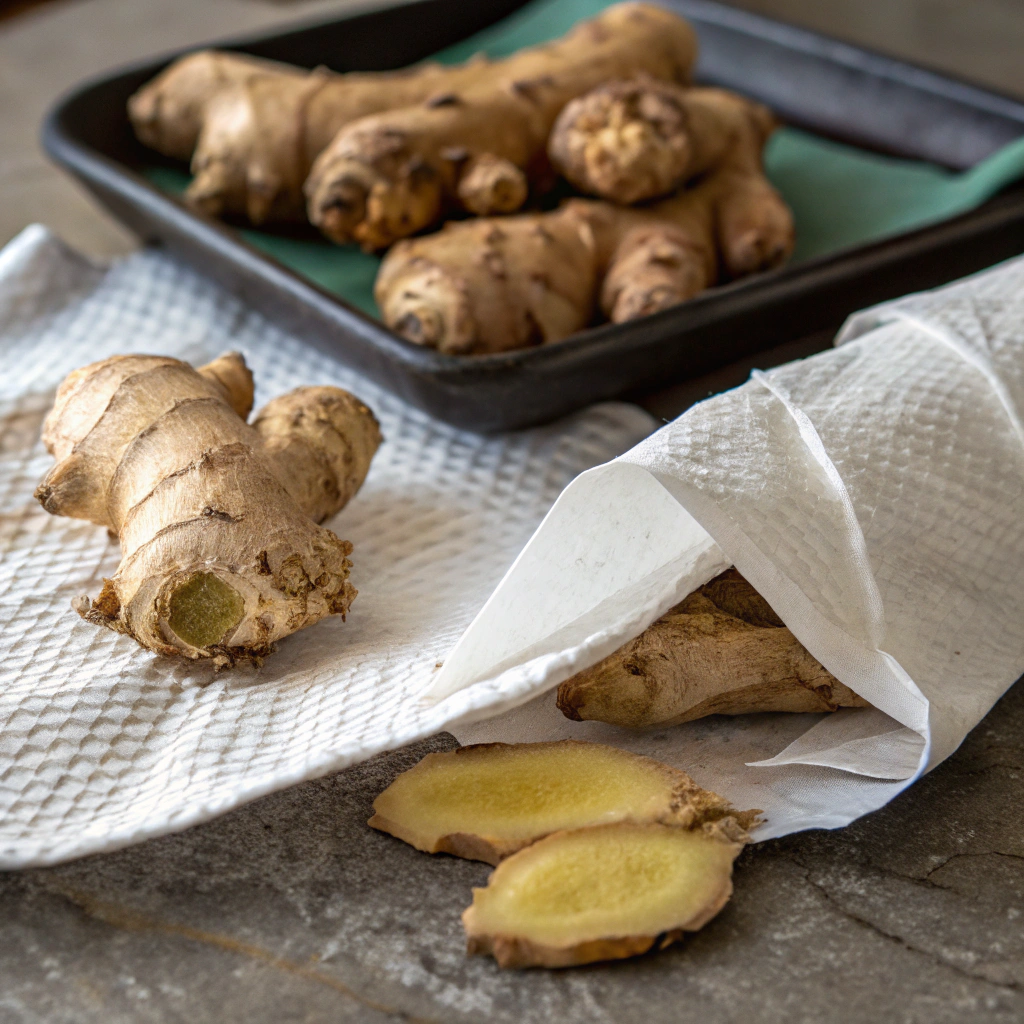
Learning to store ginger by dehydrating it has revolutionized my spice cabinet. Slice peeled ginger very thinly – a mandoline works great for this – and arrange the pieces on dehydrator trays. If you don’t have a dehydrator, your oven’s lowest setting works too. The key is maintaining a temperature around 135°F (57°C).
The drying process usually takes 4-6 hours, depending on the thickness of your slices. You’ll know they’re done when they snap cleanly rather than bend. Once completely dry, grind the pieces into powder using a spice grinder. This homemade ginger powder can be stored in an airtight container for up to six months.
Pickling Ginger Japanese-Style
Pickled ginger, or gari, is a delicious way to store ginger long-term while creating a versatile condiment. Start with young, tender ginger – it’s less fibrous and turns a beautiful pink color naturally. Slice the peeled ginger paper-thin using a sharp knife or mandoline. Salt the slices lightly and let them sit for an hour to draw out excess moisture.
After rinsing and draining the ginger, pack it into clean jars. Make a brine using rice vinegar, sugar, and a pinch of salt. Pour the hot brine over the ginger slices and let them cool completely before sealing. When properly stored in the refrigerator, pickled ginger can last for several months, adding a zesty kick to your meals.
Signs Your Stored Ginger Has Gone Bad
Visual Clues of Spoilage
When you store ginger properly, it can last quite a while, but knowing the warning signs of spoilage is crucial for food safety. Fresh ginger should have smooth, unblemished skin with a slight sheen. If you notice any fuzzy blue-green spots or white mold growing on the surface, it’s time to toss it out. The color should be consistently beige to light brown – any dark or discolored patches are red flags.
I learned this the hard way after keeping some ginger root too long in a humid drawer! Watch out for any signs of shriveling or dried-out areas, which indicate your ginger is past its prime. Keep in mind that slight sprouting is okay – those little green shoots are actually edible and nutritious.
Texture Changes to Watch For
The texture of properly stored ginger should be firm and crisp, with a slight snap when you break off a piece. When examining your stored ginger, give it a gentle squeeze – it should feel solid without any soft or mushy spots. If parts of the root feel spongy or watery, that’s a clear indication of deterioration. I always recommend doing the fingernail test: if you can easily pierce the skin with your nail, the ginger has likely started to spoil. Fresh ginger has a fibrous quality that becomes noticeable when you grate or slice it. Any sliminess or unusual stickiness means it’s time to replace your ginger root with a fresh piece.
Proper Storage Time Limits
Learning how to store ginger effectively means understanding its typical shelf life in different conditions. In the refrigerator, fresh unpeeled ginger can last 3-4 weeks when properly stored in a paper bag or airtight container. If you’ve already peeled or sliced your ginger, the timeline shortens considerably – aim to use it within 7-10 days. For longer preservation, I’ve found that freezing whole pieces of ginger works wonderfully, extending its life up to 6 months. Remember that grated ginger paste will only stay fresh for about a week in the fridge. Always label your stored ginger with the date to track its freshness accurately.
Container Choices for Storing Ginger
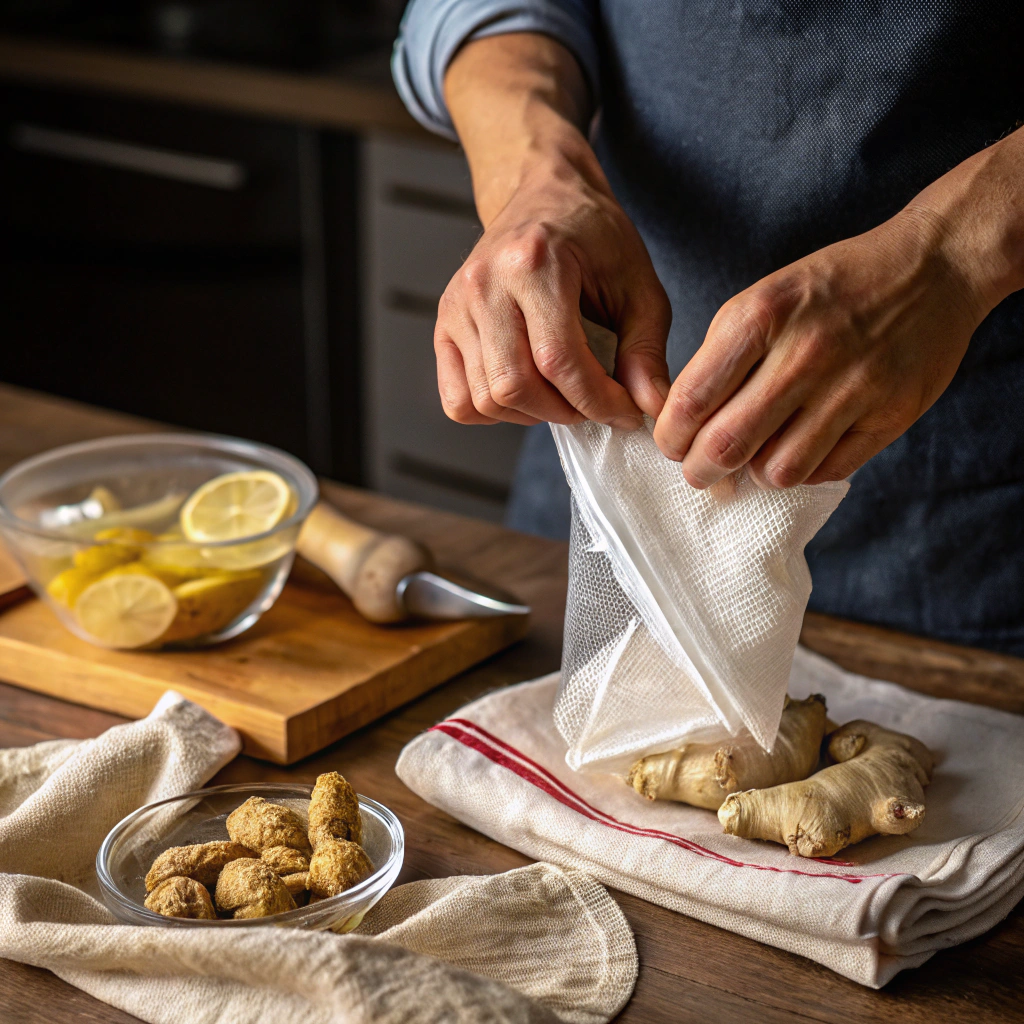
Best Airtight Containers for Fresh Ginger
When choosing containers to store ginger, airtight options are your best friends for maintaining freshness. I swear by glass containers with snap-lock lids – they’re perfect for keeping moisture levels just right. A good trick I’ve discovered is to wrap the ginger loosely in paper towels before placing it in the container, which helps absorb excess moisture without drying out the root. The container should be large enough to accommodate the ginger without cramming it in, as bruising can lead to faster spoilage. For maximum freshness, make sure your storage container has a reliable seal. I particularly love using mason jars with rubber gaskets for storing ginger in the fridge.
Freezer-Safe Storage Solutions
Freezing is an excellent way to store ginger long-term, but you need the right containers to prevent freezer burn. I recommend using heavy-duty freezer bags or freezer-safe containers specifically designed for cold storage. When preparing ginger for freezing, I like to cut it into manageable pieces first. A fantastic method I’ve discovered is to store ginger in small portions using silicone ice cube trays – perfect for when you need just a bit for cooking! Once frozen, transfer the pieces to a larger freezer container or bag. Remember to squeeze out as much air as possible to prevent ice crystals from forming on your stored ginger.
Eco-Friendly Packaging Options
Looking for sustainable ways to store ginger? There are plenty of eco-conscious options that work beautifully. Beeswax wraps make excellent alternatives to plastic, providing the right balance of protection and breathability. I’ve had great success using clean cotton produce bags to store ginger in the crisper drawer. For those who prefer plastic-free storage, glass containers with bamboo lids are both stylish and practical. When storing ginger short-term, try using repurposed glass jars with cloth covers – they work surprisingly well! Just make sure whatever eco-friendly container you choose can maintain proper humidity levels to keep your ginger fresh longer.
Start Storing Your Ginger Right Today
Ready to store ginger like a pro? Start with selecting firm, unblemished roots at the market – look for smooth skin and a fresh, spicy aroma. Keep a monthly storage calendar on your phone to track freshness dates. Remember to check weekly for any spots that need trimming. With these simple steps, you’ll always have fresh ginger ready for your favorite recipes. Share your storage success stories in the comments below!


